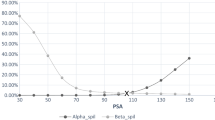Abstract
As part of the Tank Waste Remediation System program at Los Alamos, we evaluated a series of cation exchange and anion exchange resins for their ability to remove hazardous components from radioactive high-level waste (HLW). The anion exchangers were ReillexTM HPQ, a polyvinylpyridine resin, and four strong-base polystyrene resins having trimethyl, triethyl, tripropyl, and tributyl amine as their respective functional groups. The cation exchange resins included AmberlystTM 15 and AmberlystTM XN-1010 with sulfonic acid functionality, DuoliteTM C-467 with phosphonic acid functionality, and polyfunctional DiphonixTM with diphosphonic acid, sulfonic acid, and carboxylic acid functionalities. We measured the distributions of 14 elements on these resins from solutions simulating acid-dissolved sludge (pH 0.6) and acidified supernate (pH 3.5) from underground storage tank 102-SY at the Hanford Reservation near Richland, Washington, USA. To these simulants, we added the appropriate radionuclides and used gamma spectrometry to measure fission products (Ce, Cs, Sr, Tc, and Y), actinides (U, Pu, and Am), and matrix elements (Cr, Co, Fe, Mn, Zn, and Zr). For each of the 252 element/resin/solution combinations, distribution coefficients (Kds) were measured for dynamic contact periods of 30 minutes, 2 hours, and 6 hours to obtain information about sorption kinetics from these complex media. Because we measured the sorption of many different elements, the tabulated results indicate which unwanted elements are most likely to interfere with the sorption of elements of special interest. On the basis of these 756 measured Kd values, we conclude that some of the tested resins appear suitable for partitioning hazardous components from Hanford HLW.
Similar content being viewed by others
References
J. L. RYAN and E. J. WHEELWRIGHT, Ind. Eng. Chem.,51(1)(1959) 60.
W. L. POE, A. W. JOYCE, and R. I. MARTENS, I&EC Proc. Design Devel.3(4) (1964) 314.
J. A. KELLY, Savannah River Laboratory report DP-1308, 1972.
S. F. MARSH, Z. V. SVITRA, and S. M. BOWEN, Los Alamos National Laboratory report LA-12654, Revised, August 1994.
S. F. MARSH, Solv. Extr. Ion Exch.7(5) (1989) 889.
S. F. MARSH, Los Alamos National Laboratory report LA-12055, April 1991.
F. X. McGARVEY and R. GONZALES,Ion Exchange Advances, Proceedings of IEX '92, M. J. SLATER, Ed., Elsevier Science Publishing Ltd., Essex, England, 1992, 97–103.
S. F. MARSH,Ion Exchange Processes: Advances and Applications, A. DYER, M. J. HUDSON, and P. A. WILLIAMS, Eds., Royal Society of Chemistry, Cambridge, England, 1993, 81–89.
J. KORKISCH,Handbook of Ion Exchange Resins: Their Application to Inorganic Analytical Chemistry, Vol. 1 (CRC Press, Boca Raton, Florida, 1989) 33.
R. GUNNINK and J. B. NIDAY, Lawrence Livermore National Laboratory report UCRL-51061, Vol. 1 (March 1972).
Author information
Authors and Affiliations
Rights and permissions
About this article
Cite this article
Marsh, S.F., Svitra, Z.V. & Bowen, S.M. Distribution of 14 elements from two solutions simulating Hanford HLW Tank 102-SY (acid-dissolved sludge and acidified supernate) on four cation exchange resins and five anion exchange resins having different functional groups. Journal of Radioanalytical and Nuclear Chemistry, Articles 194, 117–131 (1995). https://doi.org/10.1007/BF02037618
Issue Date:
DOI: https://doi.org/10.1007/BF02037618



